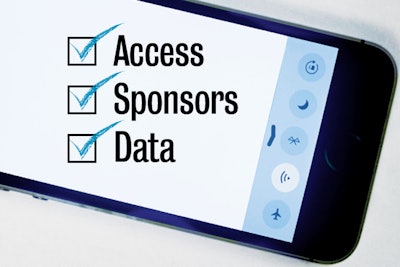
A seamless Wi-Fi connection at an event isn’t just a luxury for attendees: it may mean the difference between whether they can feasibly get away from their desks to attend at all. As well as helping guests stay connected to colleagues and conducting on-site business, a reliable Internet connection enables and encourages guests to amplify an event’s message on social media. These seven practices can ensure a smooth and seamless connection.
1. Understand how attendees will use Wi-Fi.
“Will they be casually checking emails, or will they be doing more intensive things like streaming video or downloading and uploading large files?” asks the Event Nerd’s J. Damany Daniel. “If you don’t plan in advance for how people will use the network, you’ll end up either paying too much for bandwidth you don’t need, or not having enough connectivity to do anything and the network will get bogged down, frustrating people in the process.”
2. Do a walk-through.
Just as it’s critical to plan a site visit with vendors such as caterers and decor providers, “it’s equally as important to do a proper network site visit,” Daniel says. That way, organizers can walk through the venue to understand the event’s specific wireless needs. “Taking time for a site visit allows you and your tech team to understand where you need the strongest signal, [for instance the] general session rooms, and where there might be things that block the network signal, [such as] thick walls.”
3. Simplify the password.
Trade Show Internet sales director Ian Framson suggests selecting what he calls a “reasonable password”—something at least eight characters for WPA/WPA2 encryption, but without any obscure symbols. He points out that minimizing the complexity can help reduce attendee tech-support questions and get them connected faster.
4. Tell attendees how to get access.
“Publicize your official network name and password early and often,” Framson says. He suggests doing so via email in advance of the event, on site by way of signage, on a slide during the general session, and anywhere else highly visible and convenient, such as attendee badges. Daniel adds: “Put it everywhere. Make it part of your signage, loop it on video walls, put it in conference apps and attendee brochures, and make sure that it’s on staff information cards so that everyone knows what it is. People should be able to easily access the name of your network and know how to log in without having to ask multiple staff people.”
5. Create a network landing page.
“Your Wi-Fi provider can create a landing page that welcomes guests and can quickly communicate information to them,” Daniel says. The page can also be a sponsor sales opportunity and lead-capture tool. That said, Framson adds, “Think carefully about using a branded splash page or URL redirect. Plan your content early, and test the functionality on multiple devices well in advance.” He advises collecting a minimal amount of personal details on the page to reduce friction and to present it no more than once a day.
6. Don’t miss a sponsor opportunity.
While not a matter of attendee connectivity, Framson echoes the point that an event’s Internet connection can also be a great opportunity to monetize or add value to sponsor packages. “Brand the network name and password for a sponsor,” he suggests. “Earn extra revenue to offset the cost of the network. [Plus, it] provides great visibility for the sponsor—as long as the network experience is top-notch.”
7. Gather data after the event.
“Having detailed bandwidth usage data and Wi-Fi concurrent device counts will help you plan for future events,” Framson says. “Use the data to demonstrate the value of a Wi-Fi network sponsorship for a future event. If there was a network outage, see if the duration exceeded the allowable downtime in your service level agreement, and request a pro-rata refund from your provider.”



















